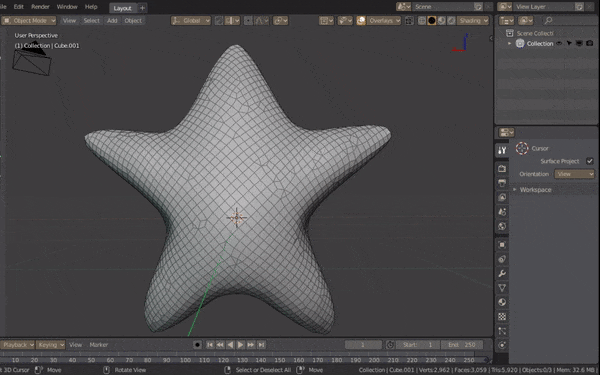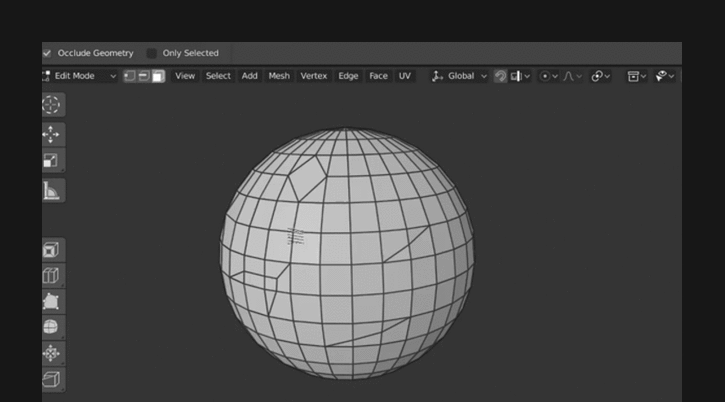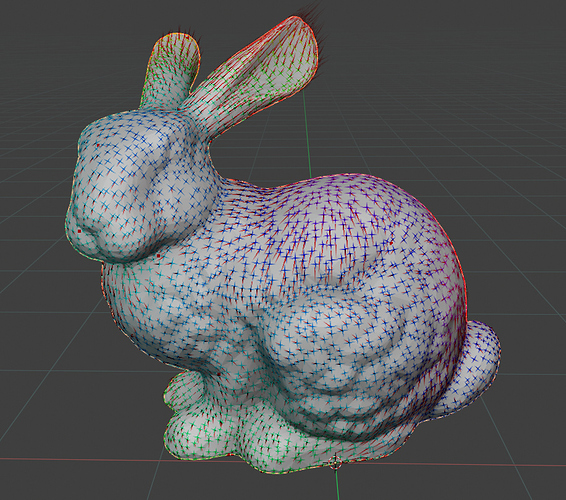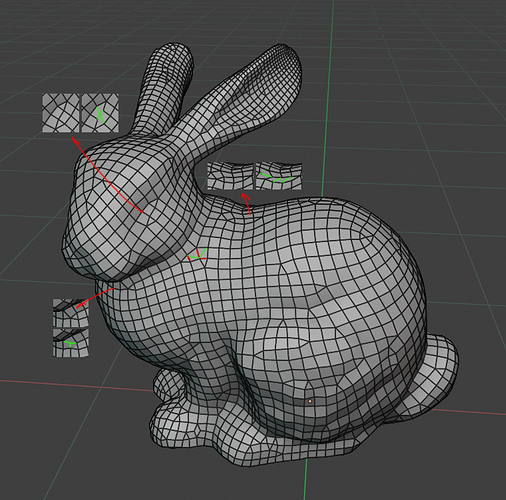Do it! Please!
It will be fine of course! The needed thing is to have, as a result, an editable mesh.
Okay then, I asked because the algorithm already takes one minute to finish on simpler meshes, it really needs an heavy optimization.
I think I got it.
An automatic intensity field that roughly describes the radius for the particles at each point on the surface to reduce the amount of poles, I have just to figure out in which units this field is defined.
Let’s hope for the best
Damn! I failed…
Scaling the particles by this weigth actually makes things worse…
I didn’t give up yet tho.
whoa, that was dramatic.
fingers crossed.
Poles: “You will never defeat us!”

But in all seriousness, I wonder if eliminating poles from the mesh is the most important task or not? For me I find it much more troublesome when there are quads that go “across” a crease or ridge in the mesh. Really noticeable in any of the more hard-surface remeshing tests in this thread, although you can see it in the organic forms as well. Personally I would accept a large number of poles in a remesh if those creases and ridges were flawless. I know that might not match everyone’s use case though.
I’m with @spiderbrigade. As long as the poles don’t join more than 5 edges, the amount of poles is less significant than good topology flow across creases, ridges and branches.
Up to now, ZBrush ZRemesher does an impressive job. If you like I can run it on some meshes of your choice, to study the topology results, @Jeacom ?
You can also take a look at this comparison I made a while ago.
Exactly this!!
I see a lot of potential in the latest algorithm. If after doing the retopo, certain patterns could be automatically corrected by subtitling. Truly most errors are very easy to correct, and the solution is a few faces of distance. With two triangles you get a square.
Yeah, that was my first plan, but coding those topology edit operations is like… a mess, I thought in creating a set of operations that can move these poles freely through the surface, so I can just move them near, and they would cancel…
But then I read a paper which talk about making a curl free field to avoid those poles in first place, I had to try it out but it seems beyond my skills yet.
Well, I dont know if comparing results between so different methods would be a good idea.
Z-remesher uses a parametrization technique, similar to an uv mapping of the mesh on a grid, while my algorithm uses a field integration to spread vertices at specified directions.
Experimenting with the tip from @wevon and trying to cancel triangles with a local edits on the mesh.
So far, the triangles just seek the nearest neighbors, I guess its not a good approach. If someone thinks a different set of movement rules would do it better, I am open to suggestions.

I played a little with another approach.
In some cases I do not like it too much, but in others I do.
Jeacom encouraged me to make the video.

A comparison between currently available Tesselator and the new prototype made from scratch.
Not many differences, just some sanity checks.
The third one clearly has the best overall polygon flow, with less dead-ends and deviations. Keep up the good work.
Just for curiosity.
Since this remesher is not meant for animation anyway…
For general work, which of these subdivision modes is better?
One creates pure quads (The regular subsurf) and other splits each triangle in two other separated triangles (Custom)
Flow on a left one looks better since it’s better in preserving edges
Like @ostapblender I’d also prefer the all-quad version if I had to choose. But maybe offering both methods as options would be best?
Yeah, I’m just asking to tweak the defaults for since many people just dont like to change the settings.


